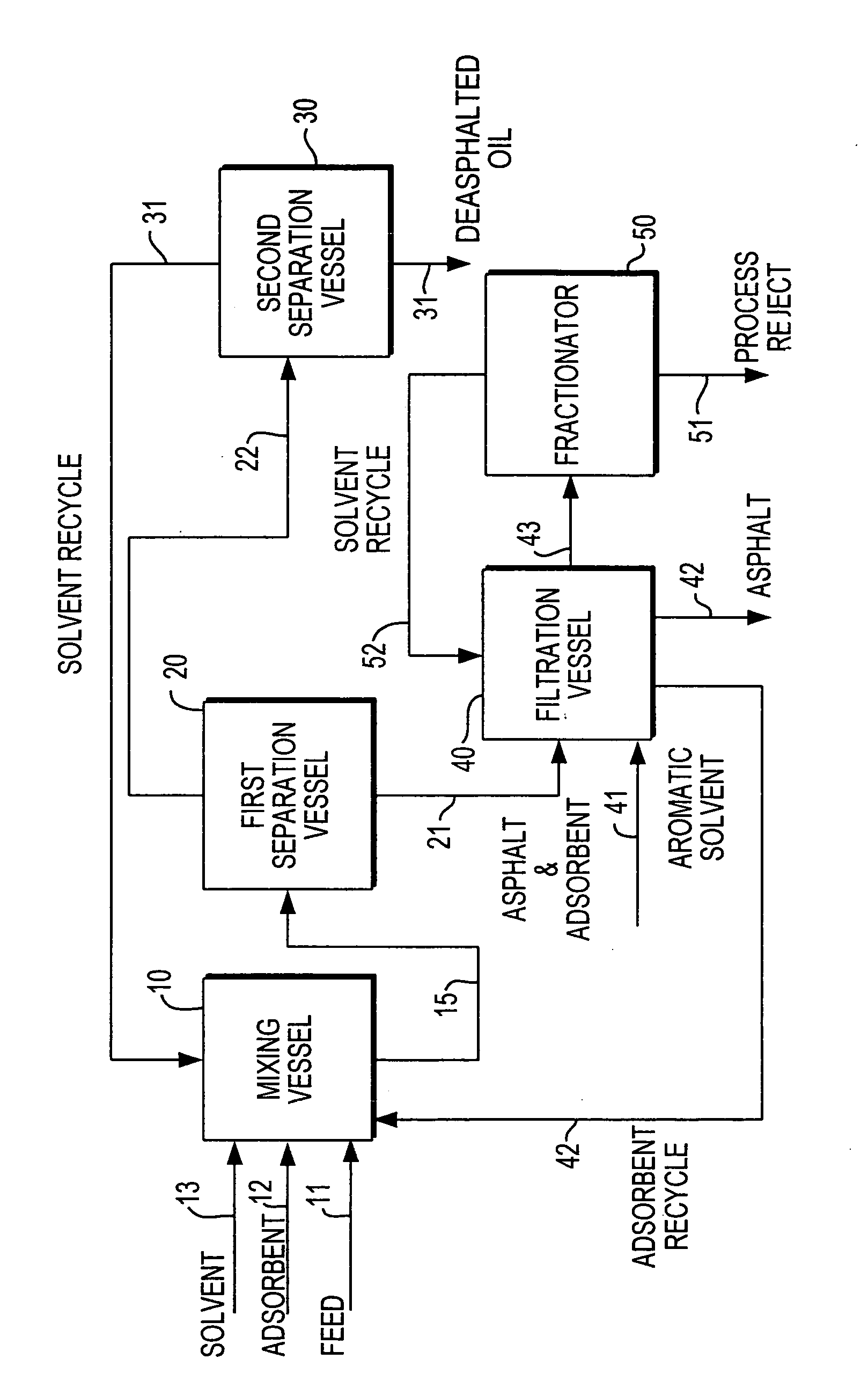Enhanced solvent deasphalting process for heavy hydrocarbon feedstocks utilizing solid adsorbent
a technology of solid adsorbent and solvent, which is applied in the direction of hydrocarbon distillation, working-up pitch/asphalt/bitumen by selective extraction, separation processes, etc., can solve the problems of affecting the catalyst cycle or process length, affecting the refinery processing of crude oil fractions, and poor conversion performance in hydrocracking or fcc units
- Summary
- Abstract
- Description
- Claims
- Application Information
AI Technical Summary
Benefits of technology
Problems solved by technology
Method used
Image
Examples
example 1
Solvent Deasphalting with Solvent Only
[0050]In a comparative solvent deasphalting process, a feedstock of vacuum residue oil that contains 5.4 W % sulfur, 4,300 ppmw nitrogen and 24.6 W % MCR from Arabian origin was treated with solvent that is a mixture of normal and isopentanes, and yields 71 W % and 29 W %, respectively, of deasphalted oil and asphaltenes. The sulfur, nitrogen and MCR content of the deasphalted oil was 4.4 W %, 2,700 ppmw and 13.7 W %, respectively. About 20 W % of sulfur, 37 W % of nitrogen and 44.6 W % of MCR were removed from the vacuum residue oil in this prior art process.
example 2
Solvent Deasphalting with Solvent and Adsorbent
[0051]In this example, the solvent deasphalting is carried out with a solid adsorbent in addition to the solvent in accordance with the present invention. The process is conducted at 30° C. and at 3 g / cm2 pressure with normal pentane and attapulgus clay. The vacuum residue from Arabian origin containing 5.4 W % sulfur, 4,300 ppmw nitrogen, 24.6 W % MCR yields deasphalted oil with 2.6 W % of sulfur, 1,400 ppmw of nitrogen and 8.2 W % of microcarbon residue.
[0052]These results establish that the use of a solid adsorbent to adsorb some of the contaminant heteroatom-containing polyaromatic molecules in conjunction with a solvent deasphalting treatment will provide a reduction of these contaminants that have a detrimental effect on the downstream refining processes.
PUM
 Login to View More
Login to View More Abstract
Description
Claims
Application Information
 Login to View More
Login to View More - R&D
- Intellectual Property
- Life Sciences
- Materials
- Tech Scout
- Unparalleled Data Quality
- Higher Quality Content
- 60% Fewer Hallucinations
Browse by: Latest US Patents, China's latest patents, Technical Efficacy Thesaurus, Application Domain, Technology Topic, Popular Technical Reports.
© 2025 PatSnap. All rights reserved.Legal|Privacy policy|Modern Slavery Act Transparency Statement|Sitemap|About US| Contact US: help@patsnap.com

